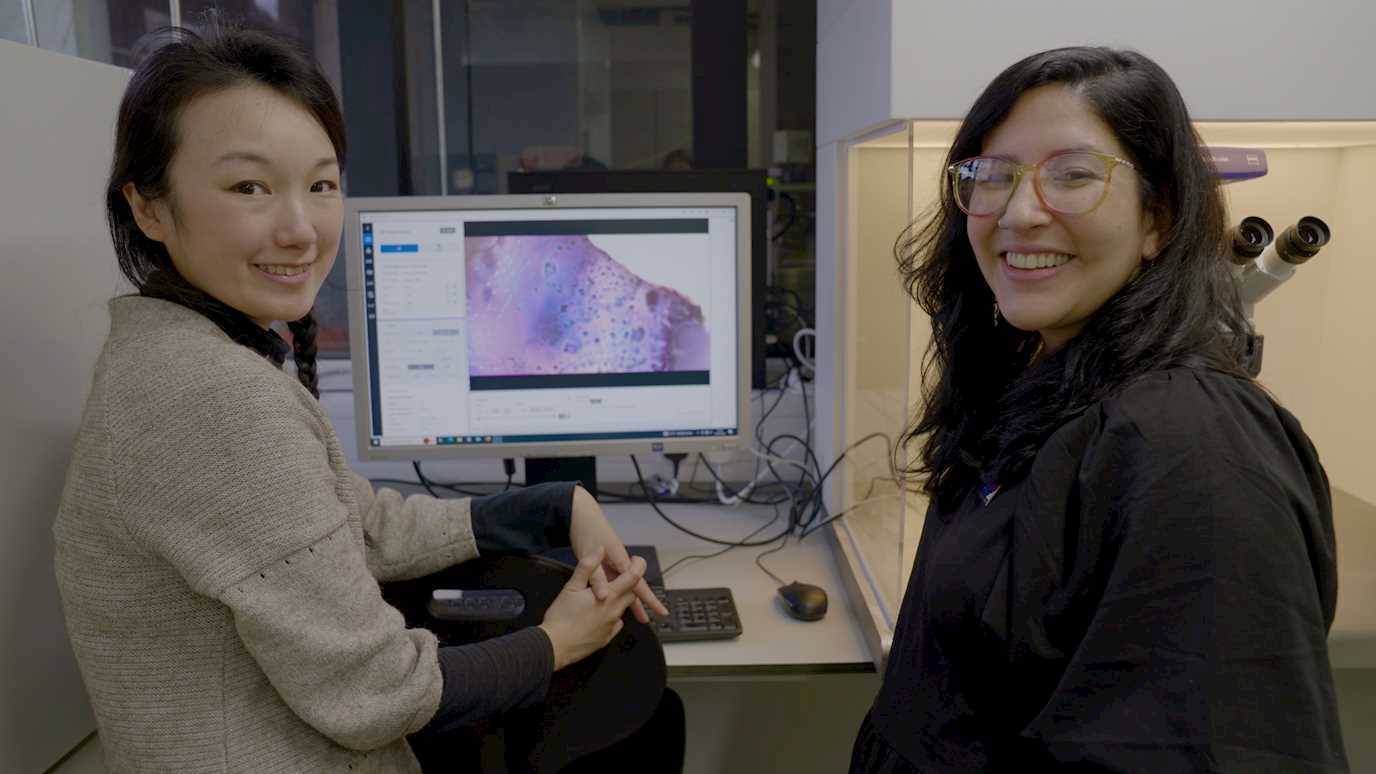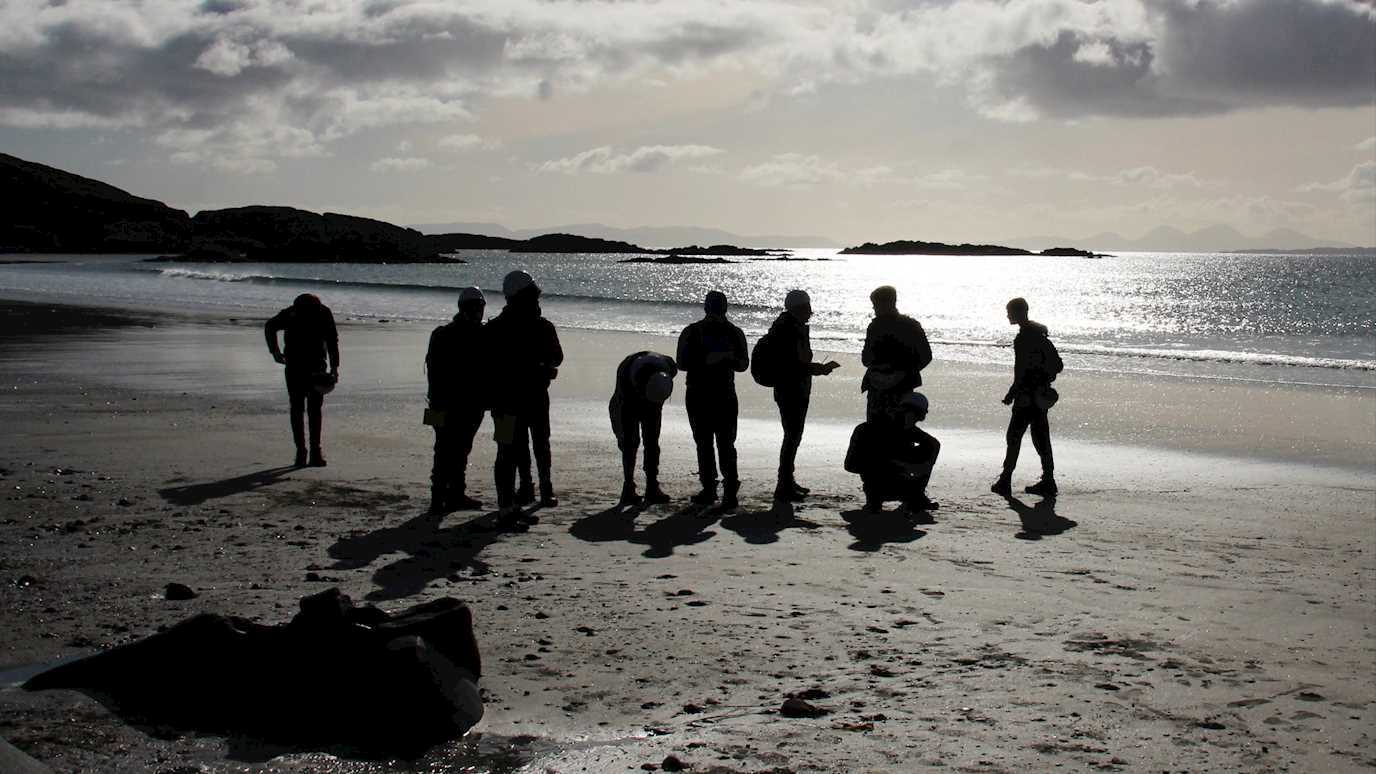Dr Paula Koelemeijer
With fewer cars, trucks, and trains plying on the roads, Earth vibrations in cities have decreased in recent weeks.
Our cities normally vibrate with the buzz of everyday life, due to car traffic, buses and trains that bring commuters between home to work. However, this has now all come to a standstill, since the government lockdown was announced on the 23rd March. Such changes in human activity are reflected in the seismic vibrations of the Earth, which can be picked up with seismometers. While these instruments are generally used to pick up earthquake signals, they can also be used to look at ambient seismic noise due to human activity or “anthropogenic noise”.
Inspired by Belgium scientists who analysed the change in signal due to lockdowns there, Dr Paula Koelemeijer from the Department of Earth Sciences at Royal Holloway analysed the seismic signals for stations around London, including the one in her own living room. These stations report a marked decrease in anthropogenic noise in the last two weeks of March, with average noise levels reduced by 20-30 % depending on the station. In residential areas, particularly the mornings seem quieter, indicating a reduced morning rush hour and less traffic on the streets.
The reduction in London is not as dramatic as those reported for other settings, for example those in a school in Truro or the university campus in Leeds. However, the fact anthropogenic noise is lower indicates that people are listening to government advice and staying at home as much as possible. “It’s very literally reflecting a slowdown of our lives,” Dr Koelemeijer told the Atlantic.
Normally, high anthropogenic noise levels mean that city environments are not a useful location for seismometers aimed at observing earthquakes. However, with the reduction in anthropogenic noise in recent weeks, geoscientists can better listen to the sounds emanating from below the Earth’s surface. Moderate earthquakes from further away can now be picked up as well, thus improving the available data for studying the interior of the Earth, while these quiet times may also provide a window of opportunity to improve our estimates of background seismicity in otherwise noisy environments.
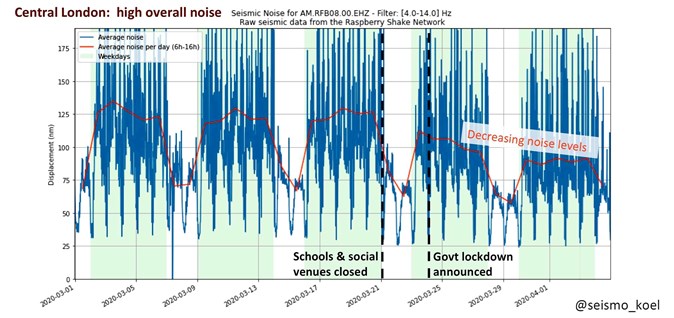 |
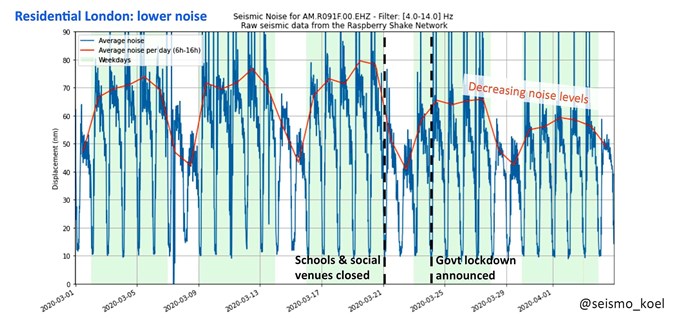 |
Seismic signals (blue lines) as recorded on two Raspberry Shake stations in London. Central London typically has much higher noise levels, due to an increase in human activity. Since the government lockdown has been announced, stations have shown a decrease in average noise levels (red line), which will hopefully continue to be the case this week.
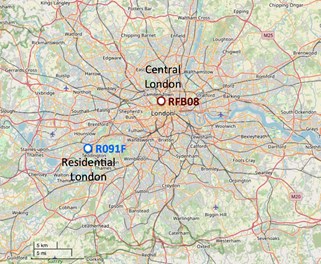 |
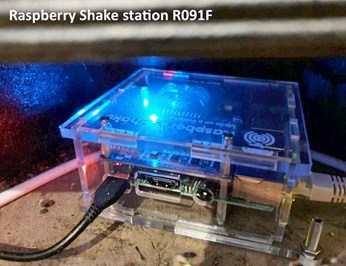 |
| Shake station locations | Shake station R091F https://raspberryshake.org/ |










